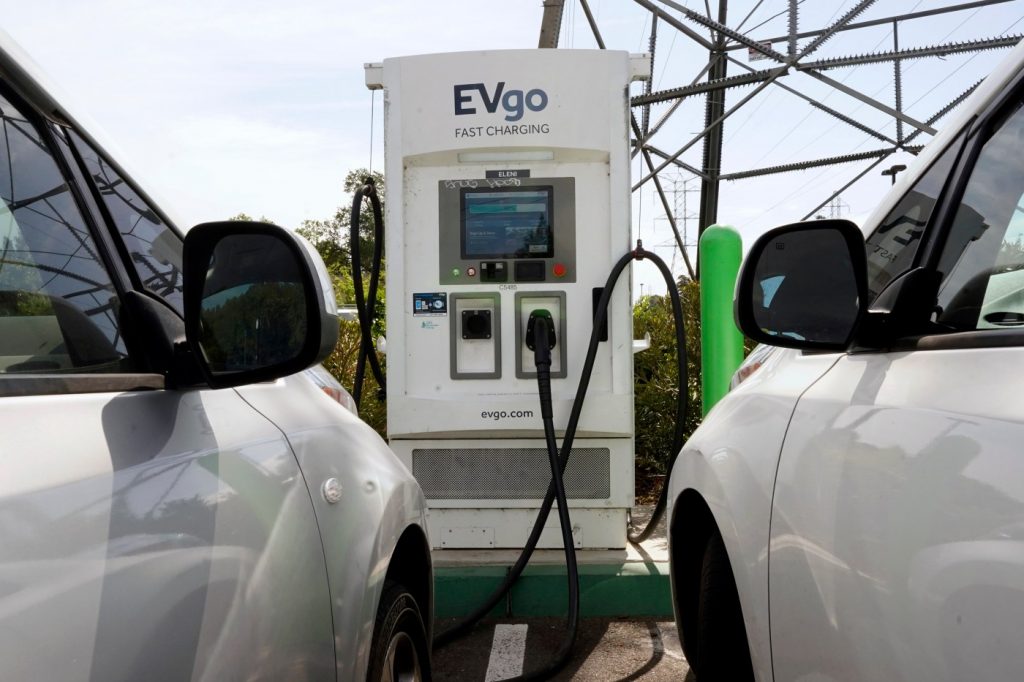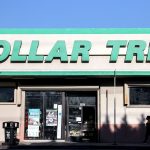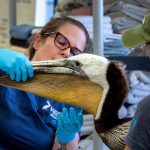When California’s electric vehicle sales dipped at the end of last year, critics predicted the start of a new downward trend that would doom the industry and the state’s broader effort to clean up the transportation sector, the single largest source of greenhouse gases and air pollution.
But the latest numbers show that’s not the case. Californians purchased 108,372 new zero-emission vehicles in the first three months of 2024 — nearly 7,000 more than the same time last year and the highest-ever first-quarter sales.
Today, one in four new cars sold in the Golden State is electric, up from just 8% in 2020.
So let’s clear the air: Far from being over, the EV revolution is in full swing. That’s not just good for the environment. It’s progress that’s having broad implications for nearly every sector of our economy.
The rapid pace of EV adoption in California has become a building block of a new industrial policy that is shaping the economy of the future. Despite what some critics say, we are not enriching other countries by creating a new market for foreign-made vehicles and components. California is now home to 56 manufacturers of zero-emission vehicles and related products, making our state a hub for cutting-edge automotive technology.
Soon even raw materials will be sourced in-state, paving the way for domestic battery production.
A recent Lawrence Berkeley National Laboratory report on Lithium Valley — a vast reserve of lithium deposits at the Salton Sea in Southern California — found there’s enough California lithium to supply 375 million electric vehicles, more than all the cars in the U.S. today.
Here again, California is demonstrating how the innovation economy can harness a natural resource responsibly as we deploy new technology and environmental protections to develop lithium with power from nearby geothermal power sources.
Challenges persist, and chief among them is the need for more widely available charging options. Many more charging stations need to be built as fast as possible to keep up with EV adoption. To address this, California is investing $4 billion over six years to rapidly build out the EV refueling network, on top of billions in investment by utilities. Equally essential is improved reliability of the EV charging network. Too many drivers today encounter faulty charging stations, which is why the California Energy Commission is developing the strongest charging reliability standards in the country and will require companies to be transparent with the public about their performance.
When Gov. Gavin Newsom issued his 2020 executive order requiring all new cars to be zero-emission by 2035, many dismissed it as unrealistic and out of step with consumer demand. But since then, California has become the first state in the nation where the best-selling car is electric and now boasts more EV chargers in the state than gasoline nozzles. The commission counts 105,000 public or shared private EV chargers installed throughout the state, in addition to more than 500,000 at-home charging stations. This compares to an estimated 120,000 gasoline nozzles throughout California.
Related Articles
Tesla under investigation over Fremont factory toxic emissions, and faces lawsuit over alleged health harms
The first electric school bus fleet in the US will also power Oakland homes
First commercial hydrogen fueling station in US for big rigs set to open in Bay Area
General Motors opens Mountain View office that will be a big tech hub
After announcing more job cuts, Tesla board rallies investors to vote for Musk’s $56 billion pay package
There’s good reason to believe that California’s success will spread nationally as more consumers embrace EVs. Seven other U.S. states have now adopted goals to phase-out gas cars and more are poised to do so. The Biden Administration’s Inflation Reduction Act will also help propel adoption, with a series of staggered incentives over the coming years to reduce the cost of electric vehicles, opening access to a new group of consumers who are eager to make the transition.
The significant growth of EV sales in California and the increase in our manufacturing workforce mark important milestones in the journey to eliminate tailpipe emissions. As the fifth-largest economy in the world, California is proof that environmental sustainability and economic prosperity are inextricably linked.
David Hochschild is chair of the California Energy Commission. Liane Randolph is chair of the California Air Resources Board. Both are public policy board members for Veloz, a California nonprofit advancing electric vehicle adoption.


